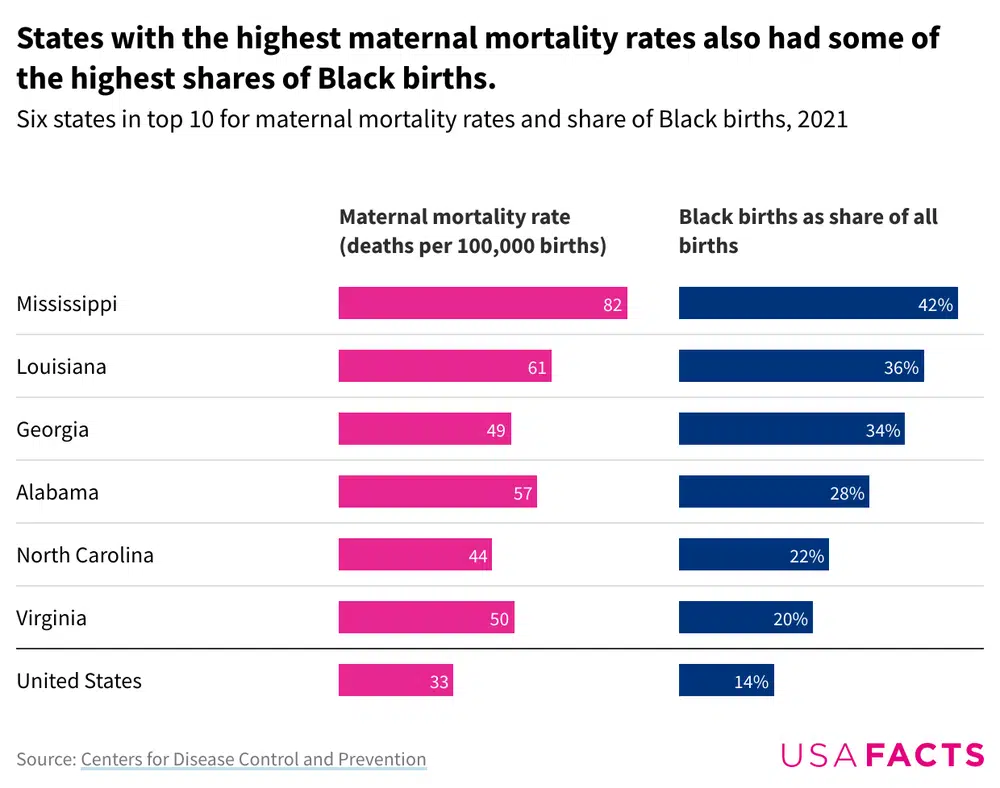Maternal mortality, or the death of a woman while pregnant or within 42 days of the end of pregnancy, is considered a key indicator of maternal health today. Eighty percent of all pregnancy-related deaths in the US are preventable, according to the Centers for Disease Control and Prevention (CDC).
Maternal mortality rates vary significantly from state to state. Mississippi had the highest maternal mortality rate in 2021, with 82.5 deaths per 100,000 births, followed by New Mexico (79.5 deaths per 100,000 births). In contrast, California had the lowest maternal mortality rate (9.7), and Massachusetts had the second-lowest (17.4).
But data is not available for all states. For confidentiality reasons, the CDC suppressed maternal death counts for states with nine or fewer deaths, resulting in data suppression for 17 states.
Black women have had the highest maternal mortality rate of any racial or ethnic group since at least 2014. In 2021, their rate was 69.9 deaths per 100,000 births, more than 2.5 times higher than the rate for white women (26.6) and Hispanic women (27.9).
Get facts first
Unbiased, data-driven insights in your inbox each week
You are signed up for the facts!
In 2021, six of the top 10 states for high maternal mortality rates also ranked in the top 10 for the highest percentages of Black births. Mississippi topped the list here as well, with the highest share of Black births (42%). Similarly, Louisiana had the nation’s fourth-highest maternal mortality rate (60.9 deaths per 100,000 births) and the second-highest share of Black births (36%).

What causes maternal mortality, and how is the government working to reduce it?
Mental health conditions accounted for the largest proportion of pregnancy-related deaths (23%), followed by excessive bleeding (14%) and cardiac issues (13%). Other causes included infections, blood clots, and hypertensive disorders.
Primary causes of pregnancy-related death varied by race and ethnicity. Cardiac issues were the main cause for non-Hispanic Black women, mental health conditions for Hispanic and non-Hispanic white women, and hemorrhage for non-Hispanic Asian women. Because of this, the CDC recommends using the leading causes of death by race and ethnicity to create life-saving interventions for pregnant women.
The CDC’s Eliminate Maternal Mortality Program partners with state and local-level Maternal Mortality Review Committees in 39 states. These committees are made up of gynecologists, midwives, nurses, mental health professionals, and patient advocates who collaborate to implement interventions aimed at preventing pregnancy-related deaths.
To learn more about health in the US, read about how states are using doulas to improve birth outcomes. Get the data directly in your inbox by signing up for our newsletter.







